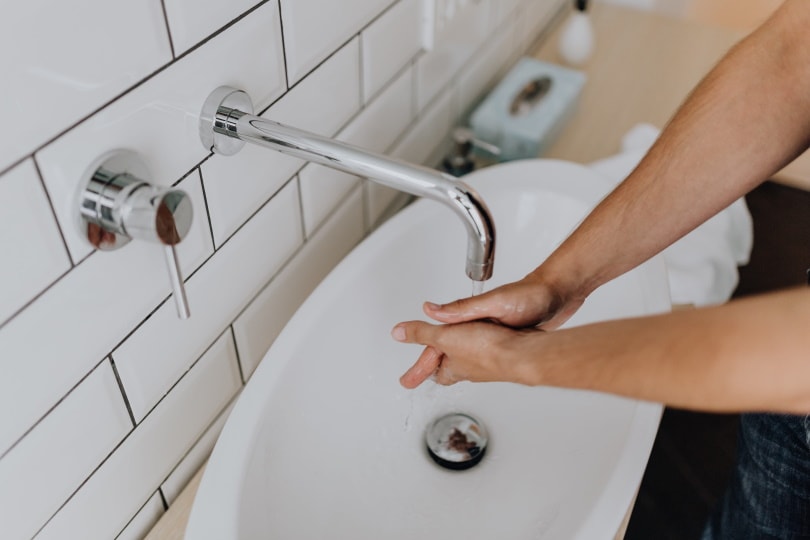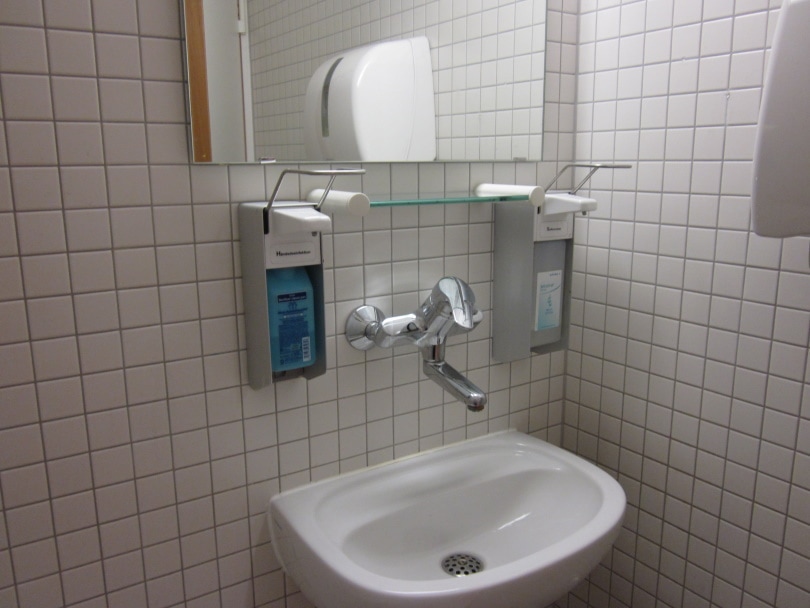What Is Bullnose Tile? Pros, Cons, Types, & FAQ
-

- Last updated:

If you’re completing a tiling project in your home, it’s only a matter of time until you hear the term “bullnose tile.” But what exactly is bullnose tile, why is it so popular, and do you really need it for your tile project?
Whether it’s right for your home and your project depends on the job you’re trying to complete, but before you can decide on bullnose tile, you need to know what it is. We developed this guide to walk you through everything that you need to know about bullnose tile before you start your next tiling project.

How Does It Work?
Bullnose tile is just like any other type of tile, but while standard tile pieces have flat edges on each side, bullnose tile has rounded edges.
This isn’t ideal for applications like tile floors or centerpieces throughout other tile work, but it is a great look for edge pieces, like trim.
The curved appearance is for aesthetic purposes only, as installing and maintaining bullnose tile is no different from installing and maintaining any other type of tile. However, you only want to use bullnose tile as an edge piece; otherwise, it’s a magnet for dirt and debris and can even create trip hazards if it’s a tile floor.

What Are the Different Types of Bullnose Tile?
There are many different bullnose tile types out there, but here are three of the most common ones: rectangular, square, and corner. The name simply refers to the shape of the bullnose tile, and almost everything else stays the same.
It is important to note that each type of bullnose tile comes in different styles too. Not only are there various patterns and colors for each shape, but different bullnose tiles might also have different rounded edges.
For instance, a square bullnose tile might have rounded edges on all four sides or only on three sides, two sides, or one side. It depends on the application to determine which one is right for you. Moreover, the rectangular bullnose tile can come in a wide array of combinations depending on which side has a rounded edge.
Bullnose tile is extremely versatile, but it also means you need to know exactly what you want when you’re shopping for it. Otherwise, you might get the right type of tile and even the right shape, but it still might not be the tile that you want for the job.

Where Is It Used?
You can find bullnose tile in a wide array of tiling applications, but you’re not likely to find it throughout an entire project because it is better suited for trim pieces. You can typically find it around tile edging, since the rounded appearance makes the job look complete. Otherwise, there’s a sharp edge that shows off the side of the tile, which typically isn’t the ideal appearance for most projects. Bullnose tile is a common way around this, so you can find it in all different shapes and sizes to fit different application needs.
Advantages of Bullnose Tile
The advantage of bullnose tile is that the curved edge gives it a natural concluding appearance. This makes it excellent for various trim work, as typical tile pieces would create a harsh edge that won’t have the same finished appearance.
You also typically order bullnose tile by the piece, so you won’t end up with extra pieces that you don’t need for your project.
Disadvantages of Bullnose Tile
There are two main disadvantages of bullnose tile. First, you don’t want to use it throughout an entire project. Having rounded edges on the tile is great for trim work, but it simply doesn’t look right throughout an entire room.
Second, you typically can’t order bullnose tile in bulk. You need to pick out each tile that you need to complete your project. This makes it more customizable, but it’s also pricier and requires more work to figure out exactly how many tiles you need.

Frequently Asked Questions (FAQs)
Here are the answers to a few of the most frequently asked questions about bullnose tile.
Why Is It Called Bullnose Tile?
The look of a bull’s nose is exactly how bullnose tile got its name. Bulls have rounded noses, and to many people, bullnose tile is similar in appearance.
Do You Have to Use Bullnose Tile?
It depends on the project if you should use bullnose tile, but there’s never really a time when you must use bullnose tile. It’ll look better on some projects, but it’s an aesthetic difference, not an actual requirement for tile installation. Take a look at your project and decide which type of tile will look best before making your decision.
Do You Put Bullnose Tile on Last?
Like most projects, when tiling, you put edging and trim pieces on last. Since you use bullnose tile for edge and trim pieces, it’s almost always the last ones that you put on. But it comes down to where you’re using bullnose tile as to when you should install it.

Conclusion
If you’re looking for the perfect final touches to your next tiling job, there’s a good chance that bullnose tile is just what you’re looking for. It’s a great way to give the final look of a project a more refined appearance, and installing and caring for bullnose tile is easy.
So, now that you know what it is, you can decide whether it’s right for your home and project or if you can just use regular tile throughout.
Featured Image Credit: LaineN, Shutterstock
Contents
